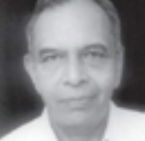Much decorated hero of Gurkha regiment
Bhanubhakta Gurung was born in September 1921 at Phalpa, in western Nepal, and joined the 2nd Gurkhas in 1940. He saw service in the First Chindit operation in 1943 which destroyed Japanese assets in Myanmar. As Rifleman, Gurung and his Battalion had advanced to Central Myanmar. The road ahead was dominated by a hill feature known as ‘Point 582’.
The 2nd Gurkhas ‘A’ Company, were in position at Point 582. That night the Japanese attacked, killing half the Gurkhas on it; leaving the remainder completely out of ammunition. The following day ‘B’ Company of 2nd Gurkhas, where Rifleman Bhanubhakta was serving, was ordered to retake the position ‘regardless of cost’.
On 5th March, 1945, ‘B’ Company attacked the Japanese on Point 582. On approaching the objective one of the sections was forced to ground by very heavy Light Machine Gun fire, grenade and mortar fire. Due to the severity of this fire, the company was unable to move in any direction. While pinned, the section came under accurate fire from a sniper a tree some 75 yards to the South.
The sniper was inflicting casualties on the Gurkhas. Rifleman Gurung, was unable to fire at the sniper from a lying position, so he stood up fully exposed to the heavy fire and calmly killed the enemy sniper with his rifle. This saved his comrades from further casualties. The soldiers then advanced again, but when within 20 yards of the objective was again attacked by very heavy fire.
Without waiting for any orders, Bhanubhakta dashed forward alone and attacked the first enemy fox-hole. Throwing two grenades, he killed the two occupants and without any hesitation rushed on to the next enemy fox-hole and killed the Japanese in it with his bayonet. Two further enemy fox-holes were still firing at the Gurkhas. Again Bhanubhakta dashed forward alone and cleared these with bayonet and grenade. During his single-handed attacks on these four enemy fox-holes, Bhanubhakta was subjected to almost continuous and point-blank Light Machine Gun (LMG) fire from a bunker on the North tip of the objective.
Realising that the LMG would hold up not only his own company which was now behind him, but also another platoon which was advancing from the West, for the fifth time, Bhanubhakta went forward alone in the face of heavy enemy fire to knock out this position. He doubled forward and leapt on to the roof of the bunker. He had no hand grenades left, so he flung two No. 77 smoke grenades into the bunker slit.
Two Japanese rushed out of the bunker partially blinded by the smoke. Bhanubhakta promptly killed them both with his Khukri (Nepali knife). A lone Japanese inside the bunker was still firing the LMG and holding up the advance of the company. He crawled inside the bunker, due to lack of space could not use his gun or Khukri and killed this Japanese with a rock, capturing the gun. Most of the objective had now been cleared by the men behind. The Japanese were collecting for a counter-attack beneath the North end of the objective.
Bhanubhakta ordered the nearest Bren gunner and two riflemen to take up positions in the captured bunker. The enemy counter-attack followed soon after, but under his command the small party inside the bunker repelled it with heavy loss to the Japanese.
He was awarded the Victoria Cross for his unflinching courage. He was also awarded the Star of Nepal, 3rd Class Gurung retired in 1946 with the rank of Honorary Havaldar. His Victoria Cross is displayed at The Gurkha Museum at Winchester, Hampshire, UK. The Gurkha Training block in Infantry Training Centre Catterick, UK is named after him. Bhanubhakta passed away on 1 March 2008. He is survived by his three sons all of whom joined the Gurkha Regiment.


 Contributed by Renu Prakash from the data bank of Late Brig. Suresh Chandra Sharma.
Contributed by Renu Prakash from the data bank of Late Brig. Suresh Chandra Sharma.